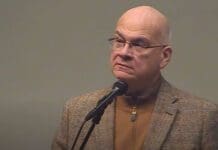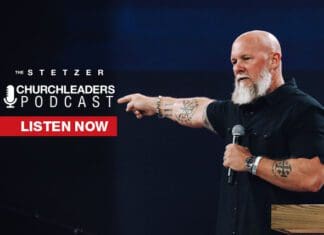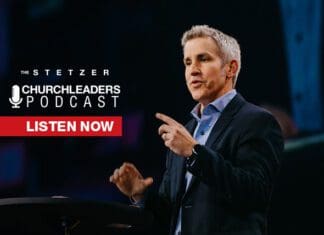‘I Was at My Lowest Point’—Forrest Frank Tells His Story and Shares the Stage With Cory Asbury
Christian artists Forrest Frank and Cory Asbury were both at Antioch, a nondenominational church Waco, Texas, to share more of their stories of redemption and reconciliation.
Amber Smith Hopes Her ‘Story of Heartbreak’ Will Be a Support to Those Who Are Suffering
Amber Smith discussed with ChurchLeaders the powerful story of how God met her in her grief after the death of her son, River, at 3 years old.
Robert Morris, Wife Request Dismissal From Cindy Clemishire’s Defamation Suit
Former Pastor Robert Morris and his wife, Deborah, have asked to be removed from a $1 million defamation lawsuit filed by Cindy Clemishire.
John Piper Reveals How He Decides What To Preach
In a recent episode of the “Ask Pastor John” podcast, theologian John Piper offered insight into how he selects a Scripture passage to preach.
Latino Pastors Look To Refit Preaching and Pastoral Care to Trauma of Mass Deportations
Latino pastors meeting in Southern California discussed how best to pastor congregations newly traumatized by the Trump mass deportation policy.
The Billy Graham Rule Cost a New York Man His Job. Now He’s Suing.
When HVAC technician Paul Ostapa refused to work alone with a female co-worker, he was fired. Now he’s suing for religious discrimination.
Dallas Jenkins: ‘The Best Christmas Pageant Ever’ Is Becoming a ‘New Christmas Tradition’ for Families
“The Chosen” creator Dallas Jenkins revisited with ChurchLeaders why he was “born to make” his passion project “The Best Christmas Pageant Ever,” now available on Blu-ray and DVD with exclusive bonus content.
Bishop Marvin Winans Says Tyler Perry Contributed $100,000 to ‘Record’ Giving Amount: ‘God Is Greater Than Viral’
Bishop Marvin Winans celebrated a “record Sunday” of giving and announced that his church had received $100,000 from Tyler Perry.
Why Ray Comfort Plans To ‘Guard [the] Microphone’ From Christians at Upcoming TPUSA Campus Event
Evangelist Ray Comfort recently shared that his team plans to “guard [the] microphone” so that only atheists, skeptics, and unbelievers ask questions him during an upcoming Turning Point USA (TPUSA) event.
Evangelist Bryce Crawford Is Engaged to Maddy Dodd
Missionary and influencer Bryce Crawford has announced that he is engaged. The 22-year-old proposed to girlfriend Maddy Dodd on Oct. 20.
Top Articles
17 NFL Players Who LOVE Jesus (and Football)
Here's our latest list of notable Christian football players. These outspoken NFL players are strong in their faith and are not afraid to share their Christian beliefs.
12 Things Pastors Cannot Do
There are 12 things a church pastor cannot do. Pastors are amazing people and, in faith, they can do a lot...just not these things.
12 Habits That Lead to Divorce, and How to Avoid Them!
No one intends to develop these habits that lead to divorce. In fact, every married couple has exchanged vows which promise “til death do us part,” but for far too many marriages, their dreams of “forever” are crushed by divorce.
Can a Christian Drink Alcohol?
Can a Christian drink alcohol? I have yet to hear from anyone who drinks say how alcohol enhances anything or blesses anyone.
Tim Keller: 3 Questions Fake Christians Can’t Answer
There are several questions that fake Christians won't be able to answer. According to Tim Keller, these are questions that focus on hallmarks of a growing relationship with God.
LATEST ARTICLES
Join our community and be part of the conversation.
To subscribe, simply enter your email address on our website or click the subscribe button below. Don't worry, we respect your privacy and won't spam your inbox. Your information is safe with us.
Get emails and offers from ChurchLeaders.com. Privacy









![Why Ray Comfort Plans To ‘Guard [the] Microphone’ From Christians at Upcoming TPUSA Campus Event Ray Comfort](https://cdn.churchleaders.com/wp-content/uploads/2025/10/ray-comfort-218x150.jpg)






















